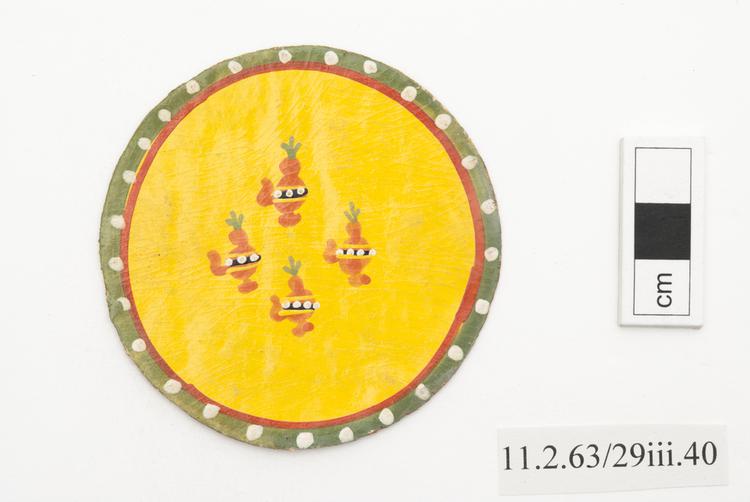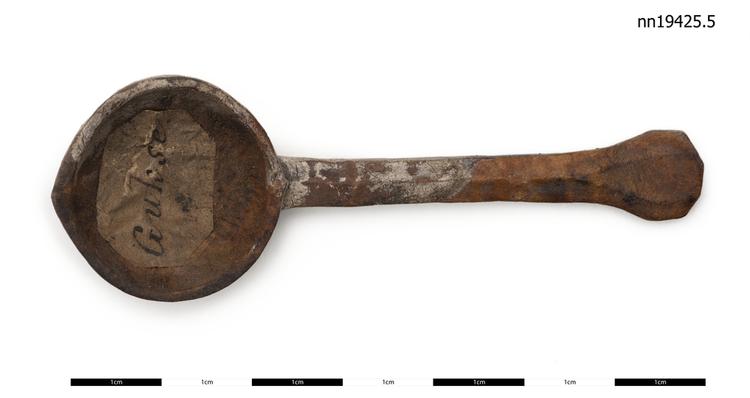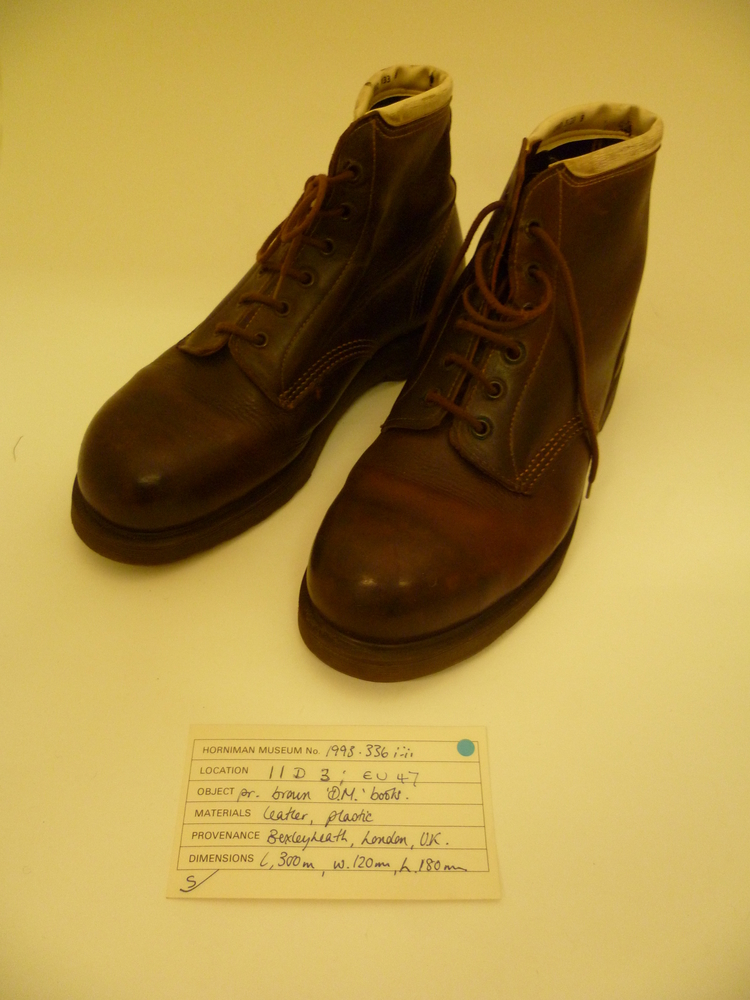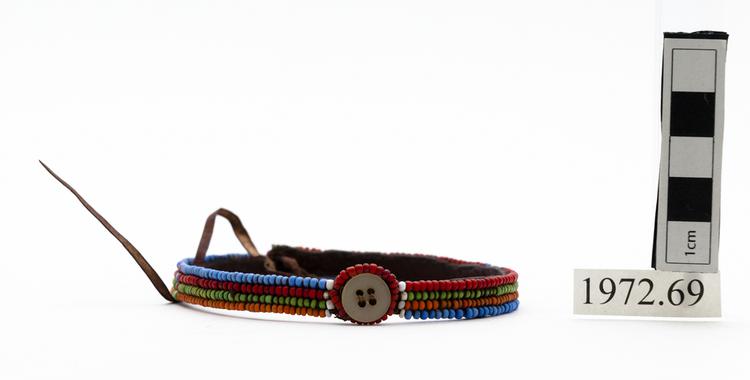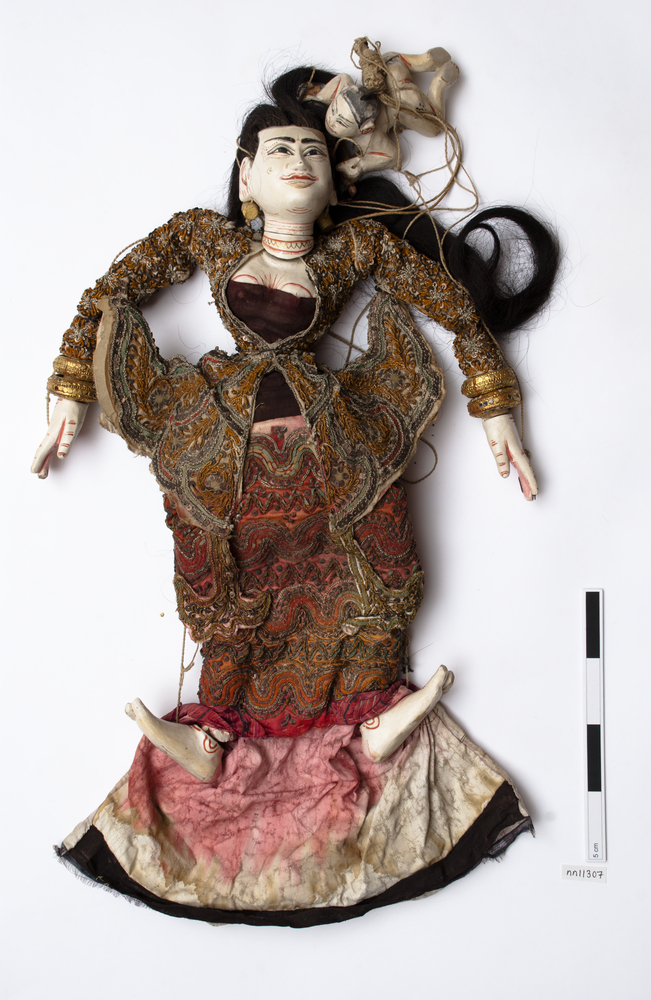
String puppet in the shape of a minthamee (princess) with a cross-bar in the shape of a small, naked boy holding two birds. The puppet is dressed in a top, a panniered jacket, and a skirt with a long tail, in colourful fabrics. The jacket and skirt are embroidered all over with sequins and thread. The puppet is wearing a beaded necklace with faceted glass pendants (one detached and missing), gold-painted earplugs, two gold bangles on each wrist and a ring decorated with glass. The face, hands and feet of the puppet and the cross-bar are decorated with paint. The puppet has strings attached to: the back of each hand; the lower part of each upper arm; the side of the head above each ear; from the back of the head behind the ear and from the centre of the lower back at waist level. She also has strings attached to the back of the shoulders. These are tied with the other strings.
There is a crescent-shaped part wrapped in metallic thread, separate from the puppet, but which is possibly a part of it.
Information from Noel F Singer Minthamee (princess). Figure of another leading lady, even more sumptuously dressed than nn4224. From what I can make out, the delightful little figure by its head is a dalet cross bar used by the puppeteer to hold all the strings; these handles still come in various shapes and sizes, usually birds with outstreached wings, with hooks under them. While the kyo swair (one who pulls the strings) puppeteer holds the dalet with one hand, he is free to manipulate each individual string with the other. In Burma, a domineering and assertive person is usually referred to sarcastically as kyo swair, one who manipulates! This puppet was not used by professional troups, as such puppets are much larger. This small marionette was probably kept by members of royalty and the elite to entertain and educte their offspring.



